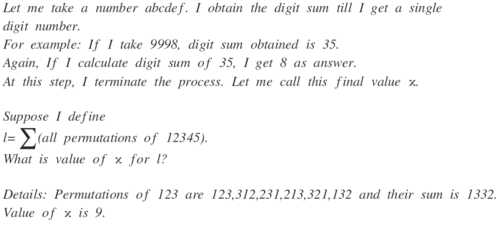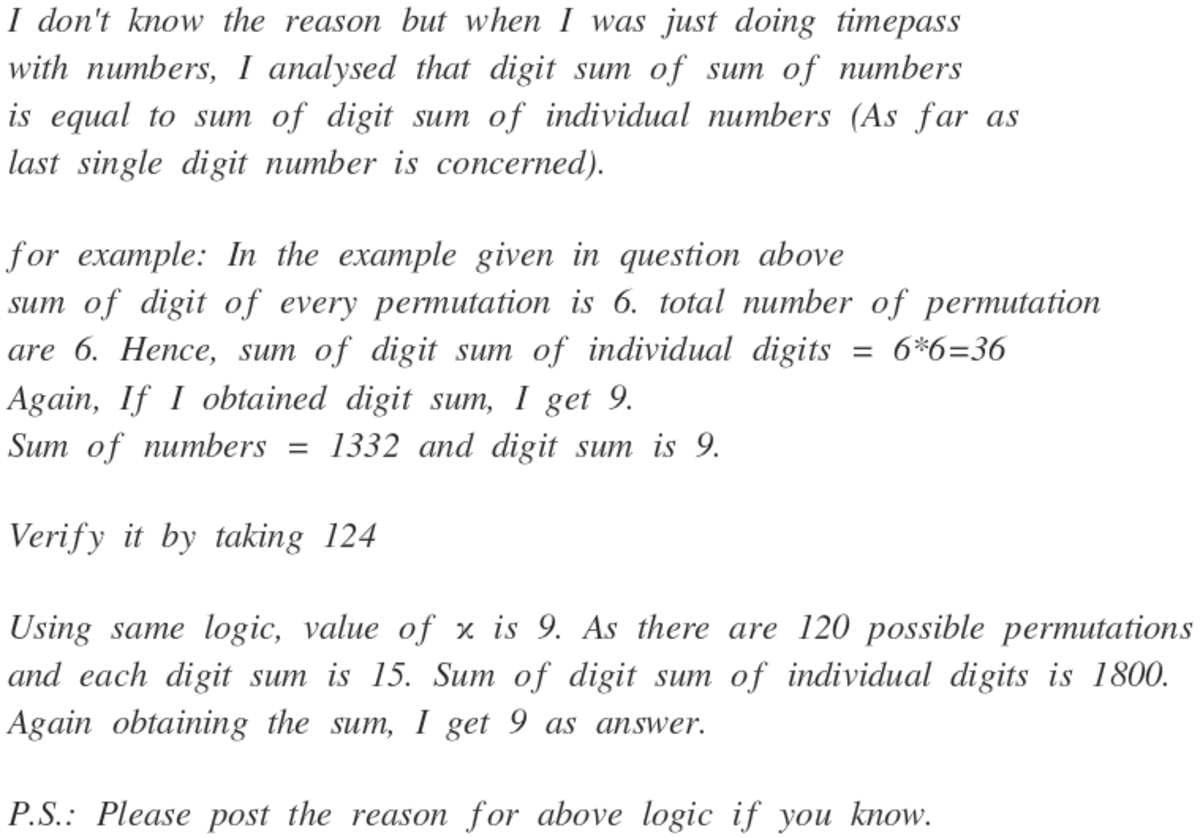Analyse it carefully

....
Answer can be obtained easily if you apply some logic. It doesn't involves much larger mathematical calculation . Only you have to analyse it carefully.
The answer is 9.
This section requires Javascript.
You are seeing this because something didn't load right. We suggest you, (a) try
refreshing the page, (b) enabling javascript if it is disabled on your browser and,
finally, (c)
loading the
non-javascript version of this page
. We're sorry about the hassle.

Basically what we need to do is calculate the sum of all the numbers that can be formed from the set { 1 , 2 , 3 , 4 , 5 } , taken all at a time .
Total number of numbers that can be formed is 5 ! = 1 2 0 .
So to calculate the sum of all the possible permutations , we use the formula : ( n − 1 ) ! ⋅ ( Sum of all the digits used ) ⋅ ( 1 0 0 + 1 0 1 + ⋯ + 1 0 n − 1 ) 4 ! ⋅ 1 5 ⋅ 1 1 1 1 = 3 9 9 9 6 0
So x evaluates to be 9 .
H o w t h e F o r m u l a W o r k s :
( n is the total number of digits to be used )
Each of the n digits used , occur a total ( n − 1 ) ! times in all the possible numbers , in each of the 1 0 i t h place
Now sum of digits in each of the 1 0 i t h place is ( Sum of the digits ) ⋅ ( n − 1 ) ! .
Now adding the sum from all the 1 0 i places , we get the above used formula ( n − 1 ) ! ⋅ ( Sum of all the digits used ) ⋅ ( 1 0 0 + 1 0 1 + ⋯ + 1 0 n − 1 ) .